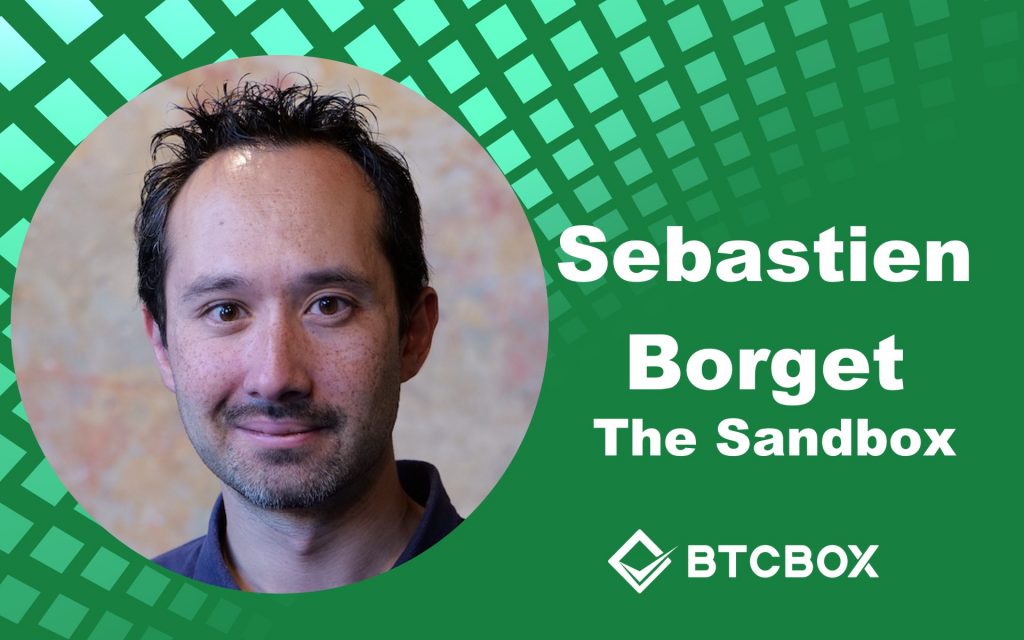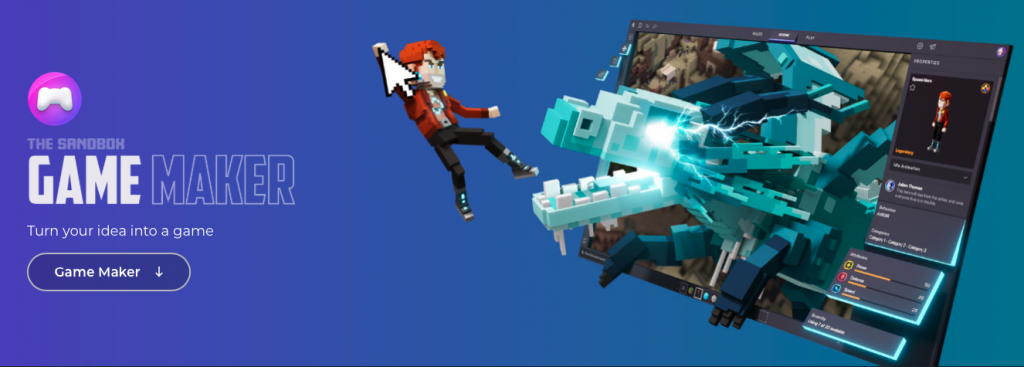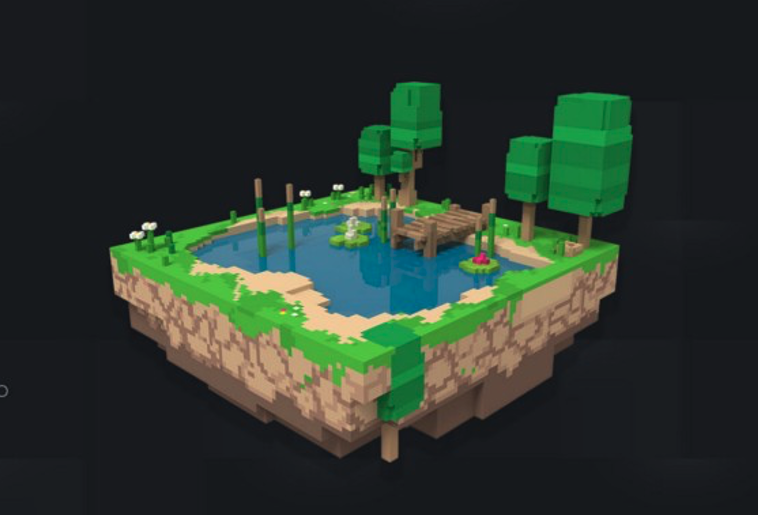
Sebastien Borget is COO and co-founder of The Sandbox, a virtual gaming world on the Ethereum blockchain. The Sandbox is a place for players and creators to earn and make assets, experience games, and monetize through the use of blockchain technology by using the non-fungible token, SAND.
Sebastien Borget
Interview Date :1st December 2020
Evolution of The Sandbox
The first version of The Sandbox launched in 2012, and its sequel launched in 2016. Today, with a total of 40 million installs on mobile, we have a massive community with up to 1 million monthly active users who share 70 million creations in the cloud. Over the years, we have become quite experienced working with IPs and brands, and we have created games for Peanuts, Garfield, Adams Family, etc. Even in the mobile version of The Sandbox back in 2012, we had Pac-Man, Shrek, Ghostbusters, etc., and many other classics. However, toward the end of 2017, we were looking for what would be the next for The Sandbox. We wanted to build a new version of it, and we had been involved with the blockchain and cryptocurrencies space prior. When we saw CryptoKitties and the protocol behind it, we immediately saw the potential of combining NFTs with user-generated content. This was different from having a single company and a single developer selling virtual cats with attributes and unique features. We wanted to enable anyone, whether players and creators, to make their own game items with an NFT certificate to provide proof of ownership. That’s how the idea of this new The Sandbox on the Ethereum blockchain originated in 2017. We are working with this new version in 3D, with multiplayer function, and multi-platform. It is using blockchain technology from the ground up with NFTs to enable users to own and monetize game items they create or earn through playing.

LAND is a new concept of a digital piece of real estate in the Sandbox metaverse where players can buy to build experiences on top. Once you own a LAND, of which there is a finite, limited number, you will be able to populate it with Games and Assets. Thus, the player can own part of the map of this virtual world. The current version is still in the development stage, so it has not been fully launched to the public yet. However, the majority of the tools that make the Sandbox platform, where artists are enabled to make their own NFTs and edit it for free with our available software, are already available in BETA. The BETA has been downloaded over 150,000 times, and hundreds of artists use it daily.

The marketplace is now live on The Sandbox.game and you can see all the content that has been created. There is a continuous increase in demand for new content, which is partly thanks to some of the largest landowners being Binance, and LPs like Atari, Rollercoaster Tycoon, Care Bears, Smurfs, Shaun the Sheep, Square Enix, and many more. We have also launched the BETA of the Game Maker, which is a 3D software for PC and MAC that enables you to create games without any programming knowledge. Thus, it encourages people to come on onboard.
The Game Maker is a very accessible software where you just drag and drop the assets you made with VoxEdit, our Asset creation tool. You can also get the already created assets for sale in the Marketplace. Game creators are very creative when they try to create a world with enemies, wizards, or pets, for example. So far, there have been several people establishing a name for themselves as a creator, and are very successful.

Creators are engaging with game jams, which is a contest where participants try to make a video from scratch. The first game jam was a hit, so we launched our second iteration of the game jam with a winning prize of 50,000 SAND, our utility token. The participants have to create a game world, and the most creative, high quality, and fun worlds will win. During the first and second game jam, our designers were shocked by how the gamer creators had used assets and the mechanics of the platform to build games and take it to the next level. The game jam is carried out streaming live until the rewards and the prize are awarded to the winners.
We created a SAND foundation, which has both a Creator Fund and Game Makers Fund to support the content creator to make high-quality games and assets on the platform. We already have 17 projects that are funded.
Game Experience
Games are created by anyone. Gamers that used to be on Minecraft and Roblox and many crypto artists come to The Sandbox for opportunities. For example, Hackatao is one very famous crypto artist who has been using The Sandbox game maker. That is why this space is intriguing. It is not just a virtual art gallery, but it’s an actual game. Those artists turn their artwork into real 3D characters and implement their story’s gameplay, progression, adventure, and discovery. That is one of the best showcases we can provide for artists. Because, without The Sandbox, their generative art can be formatted into a 3D model, but they can never play with it like they can in The Sandbox.
3 Business Models of the Gaming Industry
In the game industry, you have 3 traditional business models for monetization strategy developers use to drive revenue. One is you purchase the full game right away; you buy a game in a box or online and download it to play it without any additional purchase. Thus, you get the full game straight away. That used to be console games you would buy for around 60 dollars. You would play it, finish it, and that was it.
The second model is called Freemium, where the game is provided free of charge. However, additional features, services, actual or virtual goods to expand the game experience and functionality will require purchases. That has been democratized by mobile smartphone games very effectively. The optional features or assets, etc., for the game, can be purchased for a better gaming experience. The main issue is that the content, such as the digital virtual assets you buy by spending real money, is not yours. In other words, if the game ceases to exist, everything you have paid for will just disappear with all the virtual coins you paid real money to acquire.
Today, we are in an industry where games have a limited lifespan. Many games you started to play on your first iPhone or Android 5-10 years ago don’t exist anymore. The money you spend on virtual content and games no longer exists, and you as a player have lost everything with no compensation for it. Even in case you want to leave a game that you might have inserted 100 dollars in, you will not get back the remaining 10 dollars that you have not spent in that game world. Those remaining 10 dollars in the virtual coin currency will be lost as there is no way for the gamer to claim and get back the money. Nevertheless, the Freemium model has enabled games to more casual gaming. There are 2.5 billion gamers around the world as a result of the free-to-play model, and it is a centralized economic system. In this, ultimately, users are losing rather than participating in the success of the game.

With NFTs and blockchain technology, all the content you buy or earn in the game as an NFT will belong to you. Hence, you can transfer it to other users, trade it, and if you leave the game or the game ceases to exist, the content will still be on your wallet. Furthermore, the gamer is free to decide what to do with it, and that creates a lot of other possibilities for him or her. With this technology and use-case, we finally have the basis for an economic layer in games that goes beyond just gaming. This is what we created with the open metaverse and an open-economy.
The third business model we are pioneering in The Sandbox, Play-to-earn, is the idea that games are free to play and you don’t need to spend anything on it. That is optional. If you earn content in the game, the content can be sold, transferred in a permission-less manner to other users. This allows for creating a revenue model for you as a player or a creator, so you can monetize your time and skills. You don’t need to ask for permission from the developers, and you are not restricted to anything. Different from casino or poker games, Minecraft, etc., you don’t have any restrictions on how much you can earn before you can withdraw, either.
Sandbox – Deposits and Withdrawals
Winning money at other platforms usually is a very misleading and confusing concept. The platforms may say “you only played for 30%”, and thus the company takes the rest of the winning prize. They may restrict you from withdrawing anything until you have earned a certain sum, like 1,000 dollars. The Sandbox is an open-economy, and you can do withdrawals, conversions, or earn anytime and however much you like. It is very advantageous for users to take part in the platform development.
Ultimately, it will not be the developers who make a revenue out of the users. It will be the developers and the community of the developers, players, and the users who will share the benefits of growing together. It is more aligned because it means now that the users have a real economic interest to innovate the platform because of the direct relation it has with them.

Interviewer , Editor : Lina Kamada
【Disclaimer】
The Article published on this our Homepage are only for the purpose of providing information. This is not intended as a solicitation for cryptocurrency trading. Also, this article is the author’s personal opinions, and this does not represent opinion for the Company BTCBOX co.,Ltd.


